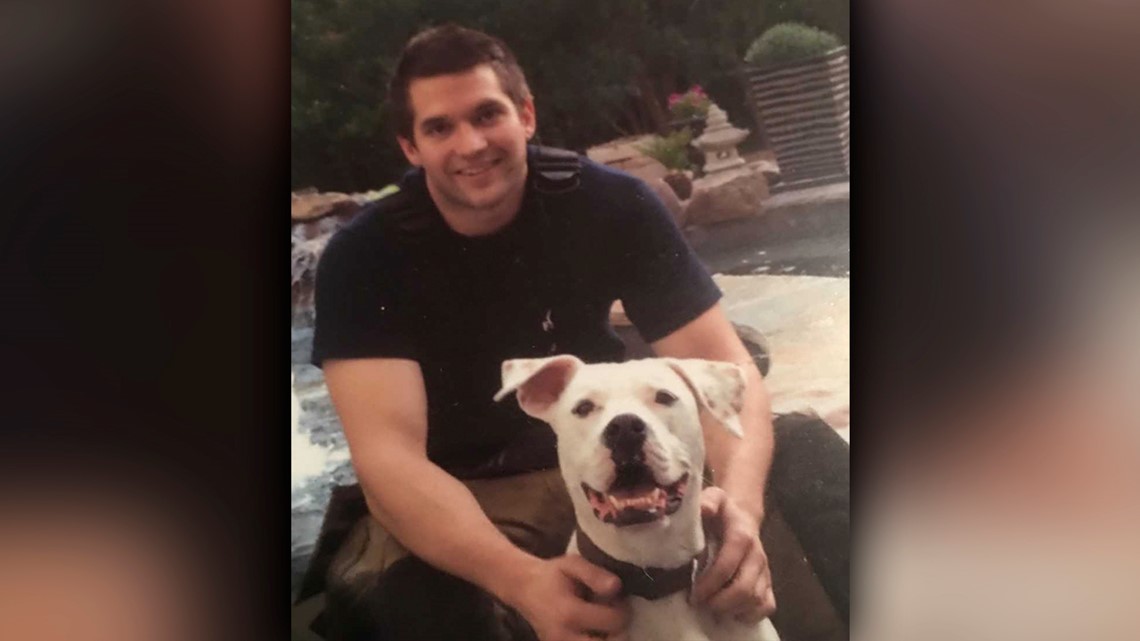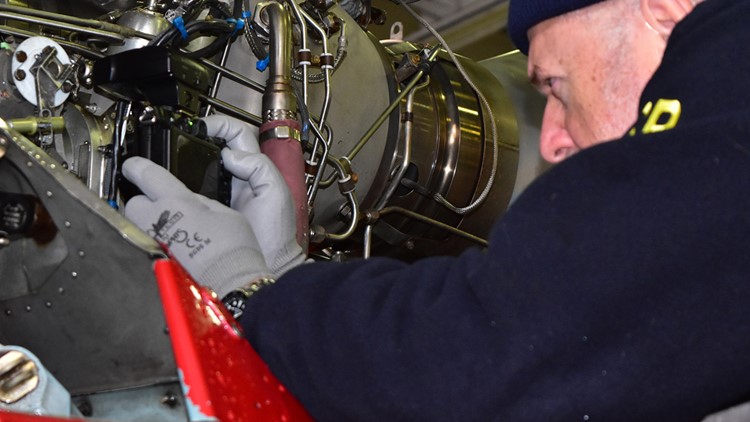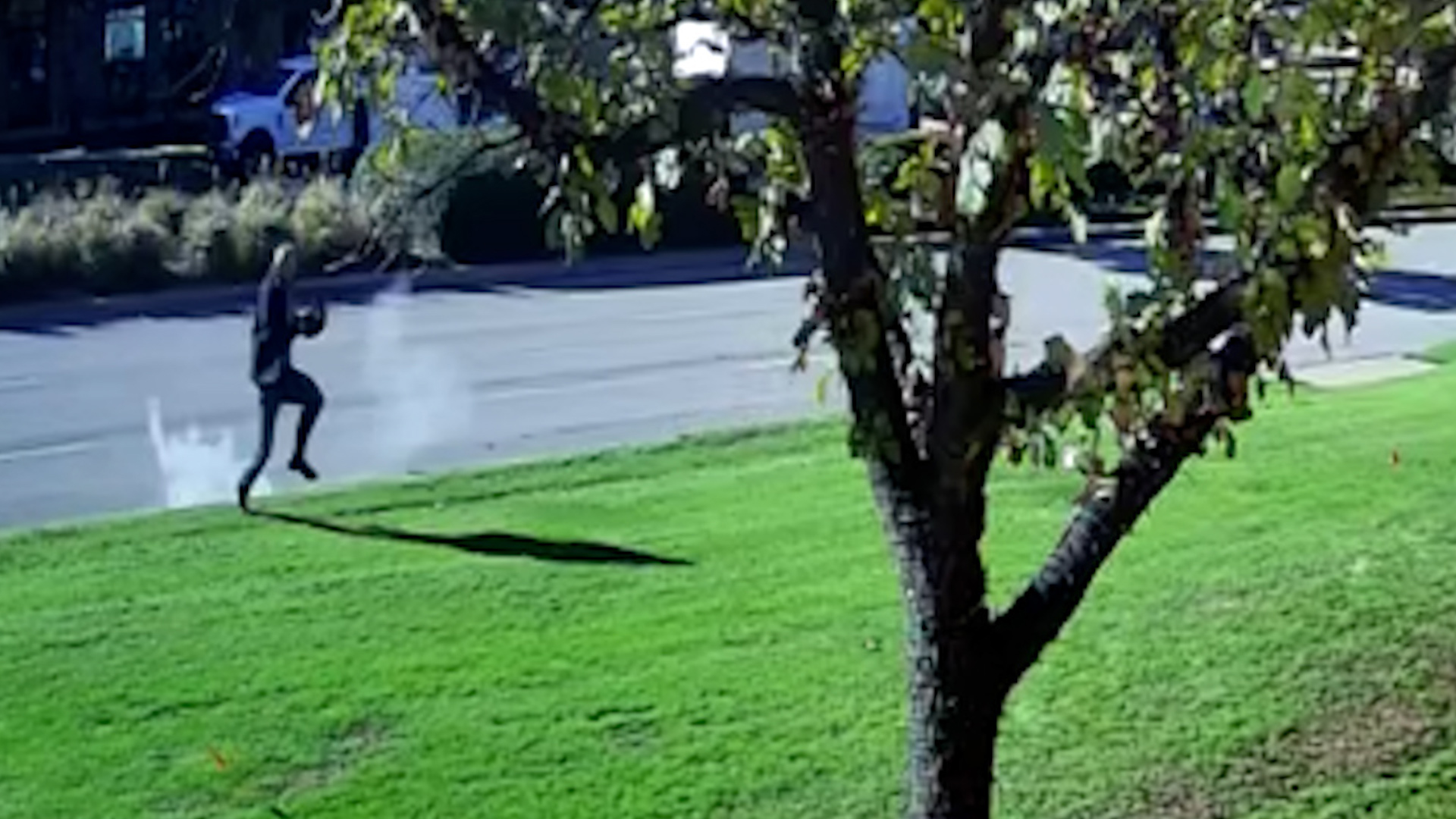NEW YORK -- The National Transportation Safety Board released a preliminary report Monday of its investigation into the March 11 helicopter crash in New York City that killed five people, including two men from Dallas.
The Liberty helicopter was taking passengers on a doors-off photography helicopter flight before it lost engine power and crashed into the East River, rolling over. The pilot was injured but managed to get himself out. The five passengers were trapped by their harnesses and unable to save themselves.
They were identified as Dallas firefighter Brian McDaniel, 26; journalist and former WFAA intern Trevor Cadigan, 26; Carla Vallejos Blanco, 29; Daniel Thompson, 34; and Tristan Hill, 29.
According to the preliminary report by the NTSB, which has not been finalized and is subject to change, the pilot told investigators that he performed his preflight inspection and made sure his helicopter was fueled when he arrived at work the morning of March 11. He then piloted multiple 15 to 30-minute flights, but couldn't remember exactly how many.
The accident flight was scheduled for about 7 p.m., the report states. The pilot told investigators that at about 6:45, he "checked his passengers' harnesses and put their life vests on. He pointed out where the cutting tool was located on their harness and explained how to use it. He then seated the passengers and secured their harness tethers to hard points on the helicopter. After the passengers were seated, loading personnel assisted them with putting on the helicopter's restraints."
The report reveals that the pilot then gave the passengers a safety briefing and told which passengers would remove their restraints and which would remain buckled during the flight. He then asked the passengers to put on their headsets and finished his safety briefing, the report states, before again explaining "how to use the cutting tool to cut the seatbelts."


The flight took off and went toward the Statue of Liberty, the report states, at an altitude 300 to 500 feet above ground level. The outside passengers were told to stay in their seats and restraints but could turn sideways (out of the helicopter) to take pictures. The inside passengers removed their restraints but were tethered to harnesses as they sat on the floor with their feet on the helicopter's skids, the report reveals.
They flew to the Brooklyn Bridge and then continued up the East River toward Central Park, the pilot said. When he slowed the helicopter near Central Park so passengers could take photos, the pilot said he "noticed that the front passenger's restraint was hanging from the seat. He picked it up, tapped the passenger, and told him to put it back on, which he did." He also stated that passengers in the past had accidentally released their seatbelts during previous flights, the report adds.
The pilot then told investigators that the front passenger "turned sideways, slid across the double bench seat toward the pilot, leaned back, and extended his feet to take a photograph of his feet outside the helicopter."
As the pilot tried to start heading south, the helicopter's nose "began to turn right faster than he expected." Engine pressure and fuel pressure warning lights turned on, he said, and he believed they had engine failure. He tried to fix the issue and thought about landing in Central Park, he said, but there were "too many people."
He said he went toward the East River instead and made a distress call to air traffic control, yelling back at the passengers to get into their seats.
"Due to the helicopter's airspeed, he was not sure he could make it to the East River and reduced rotor rpm so he could 'glide better,'" the report reveals.


He tried unsuccessfully to restart the engine, he said, and activated the floats at 800 feet. He told investigators that he then "committed to impact and, when he reached down for the emergency fuel shutoff lever, he realized that it was in the off position. He also noted that a portion of the front seat passenger's tether was underneath the lever."
He flipped the lever back to the "on" position and tried to restart the engine again. He had "positive indications," but then realized the engine "wasn't spooling up fast enough" as the helicopter got closer to the river.
His efforts weren't successful and the helicopter hit the water, soon filling with water.
The pilot said he kept his restraint on and "reached down for the front passenger's carabiner attachment to the helicopter. He turned the knurled screw 'two or three rotations'; by that time, the helicopter was 'listing past a 45° roll.'"
By the time the pilot unbuckled himself, he was under water. He pulled himself out and crawled on top of the vehicle waving for help, he said.
Emergency crews extricated the passengers, who they said were tightly harnessed. The helicopter stayed in the East River for about 18 hours before it was recovered, the report states.
The NTSB said it was "substantially damaged" during the crash and there was no evidence of "blockages or foreign object debris" on the engine's filter.
"The snapwire (witness wire) between the fuel shutoff lever and the engine control housing was broken at its lower end where it was normally secured through a hole in the control housing," the report states.
As for the engine, it appears there were no leaks or issues. As for the emergency float system, some of the yellow floats were inflated more than others.
"The emergency floats' left pressurized gas cylinder gauge indicated about 0 psi, while the right pressurized gas cylinder gauge indicated about 4,000 psi," the report states.
There was no evidence of "binding" in the trigger mechanism that activates the floats, according to the report.
As for the restraints on the passengers, the report reveals that they were made up of "off-the-shelf components consisting of a nylon fall-protection harness that was attached at the occupants' back by a locking carabiner to a lanyard. The lanyard was composed of multiple woven fabric loops, and the opposite end of the lanyard was secured by another locking carabiner to a hard point on the helicopter. A small pouch was attached to the harness and contained a cutting tool. Under normal circumstances, at the end of each flight, personnel would unscrew the locking carabiner located on the back of the passengers' harnesses so that the passengers could egress."
The investigation continues. You can read the full preliminary report here.
Since the crash, the family of Trevor Cadigan, who grew up in Dallas and graduated from SMU, filed a lawsuit against Liberty Helicopters, the pilot, and the tour operator NY on Air. The lawsuit claims they are "negligent in that their policy of so-called helicopter 'doors off' photo flights is inordinately dangerous and risky and should only be permitted for professional photographers in special situations and not for amateur tourist photographers."
The lawsuit also targets the company policy of "providing a knife to each passengers to cut through their harness to extricate themselves is grossly negligent and reckless," and states that the restraint system used, "securing passengers to the helicopter with harnesses attached from the back by a metal ring known as a carabiner which is a death trap and does not permit them to reach and activate release mechanism on their own."
Last Friday there was a Celebration of Life for both Cadigan and McDaniel, who attended Bishop Lynch High School together.
“There is a reason for everything,” said their former football coach Bill Persinger. “'But remember coach,'” he said of the advice someone once gave him, “God needs good people in his army too.”



